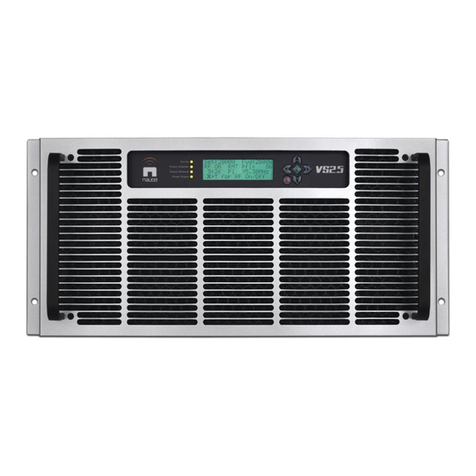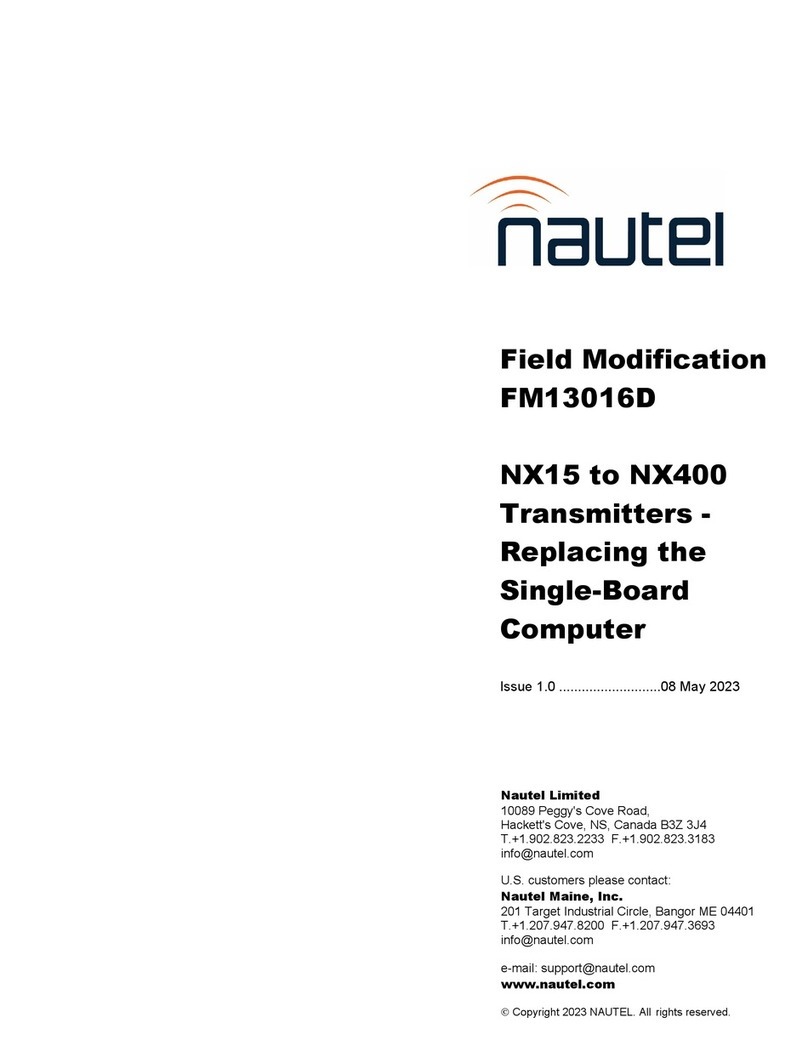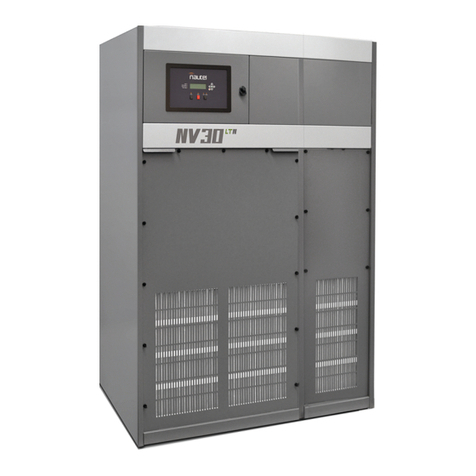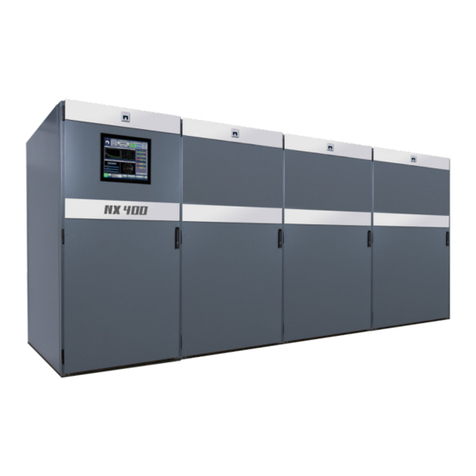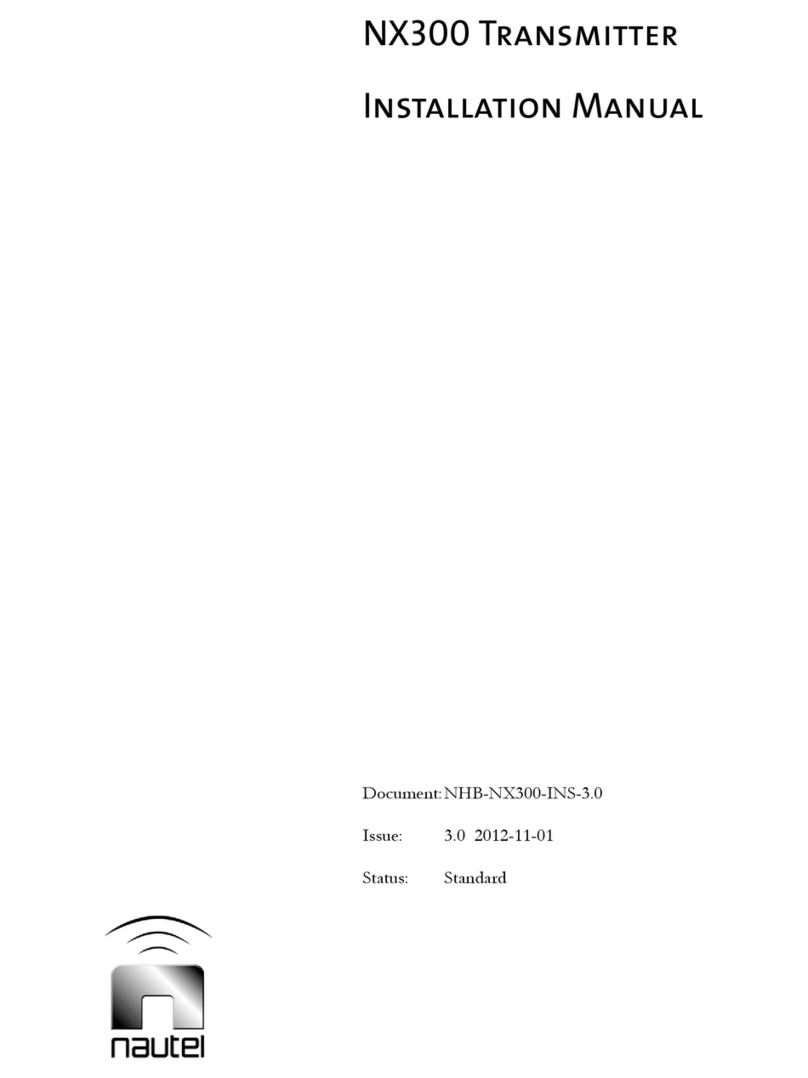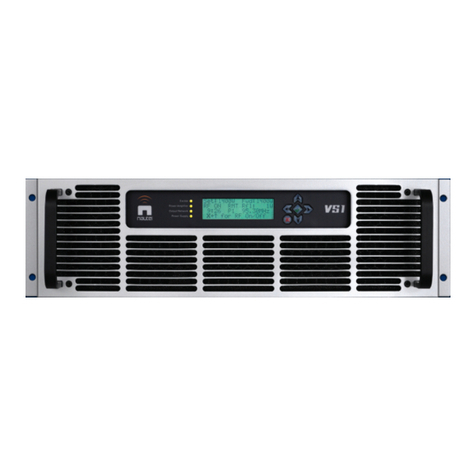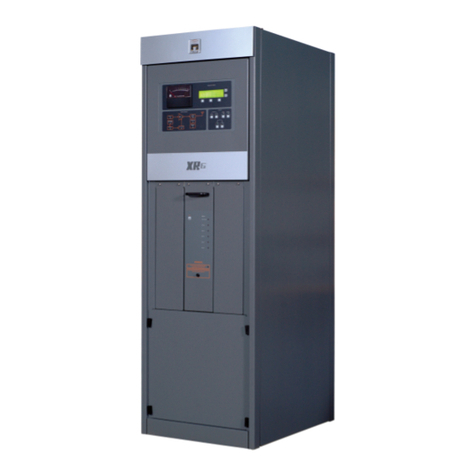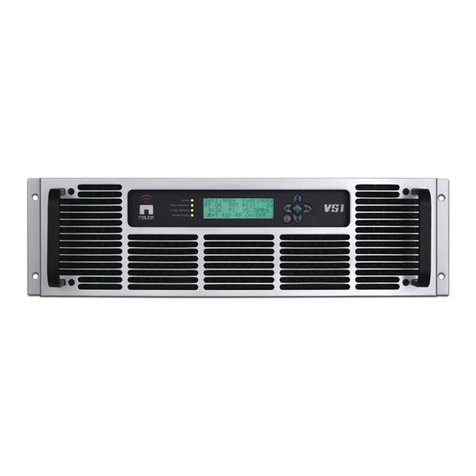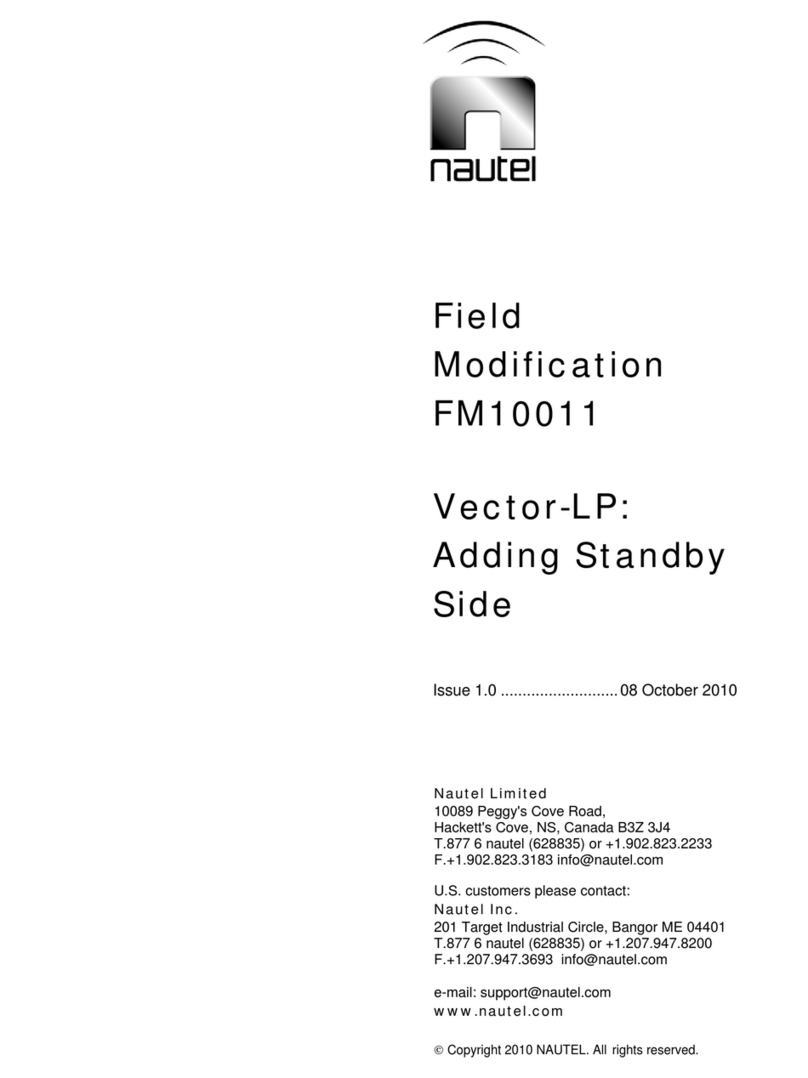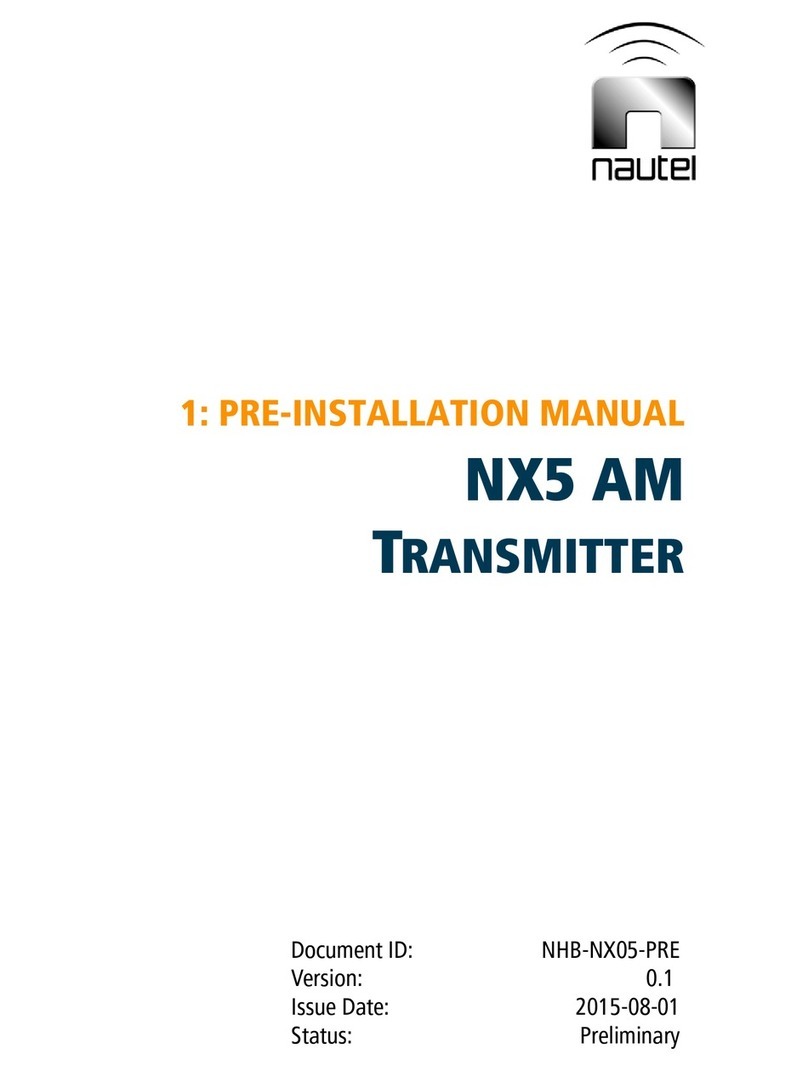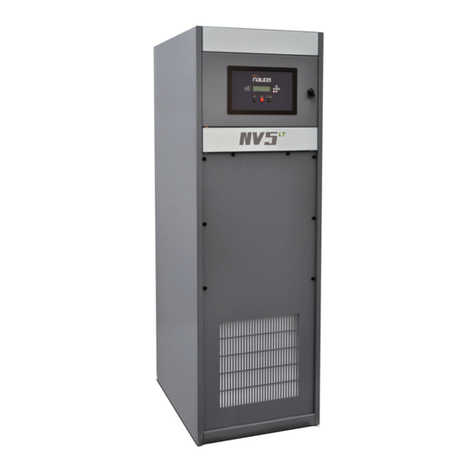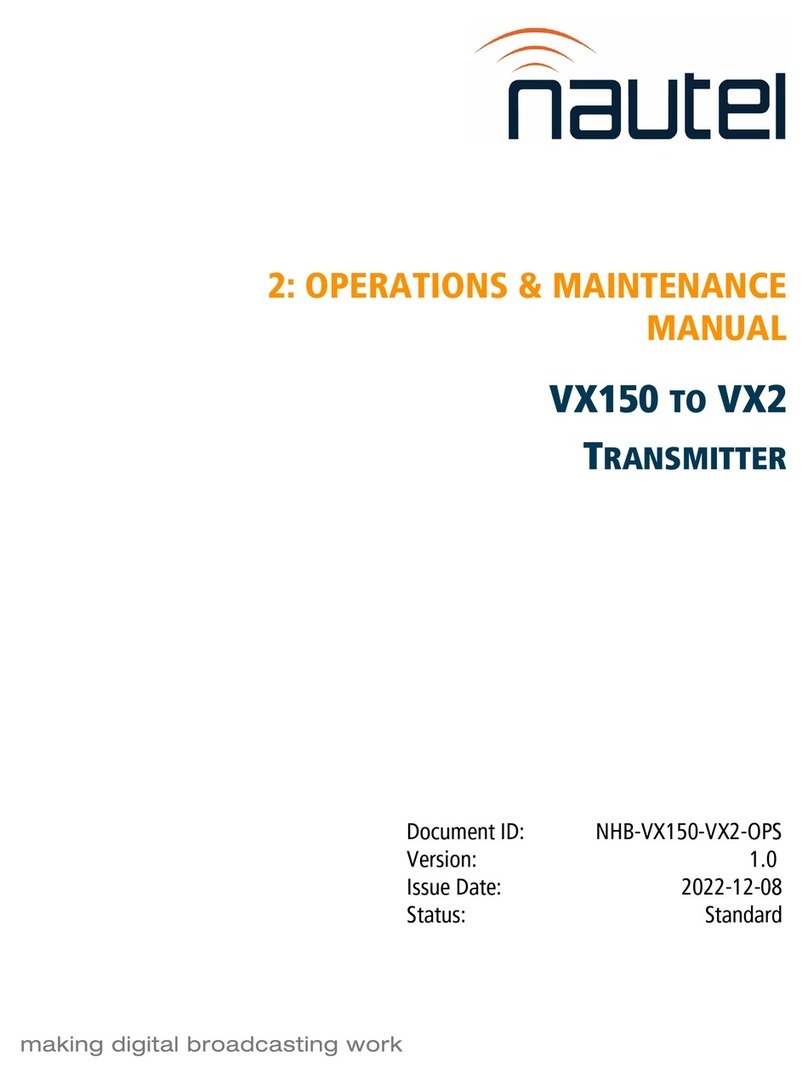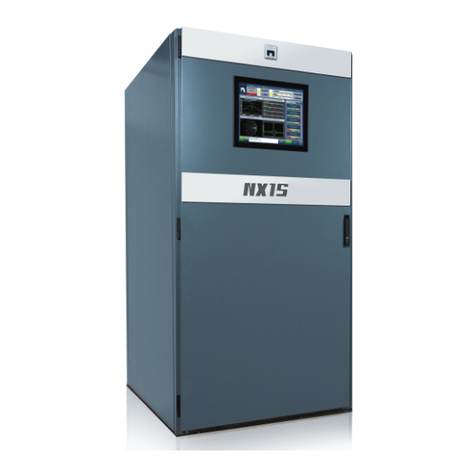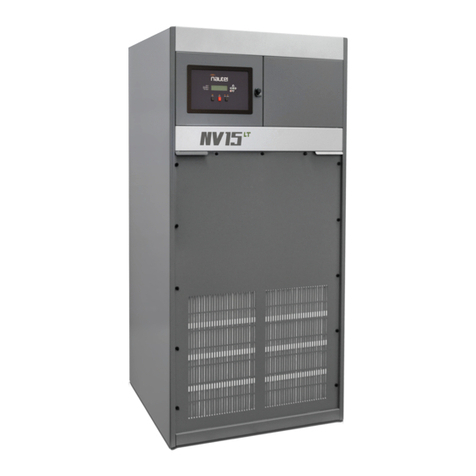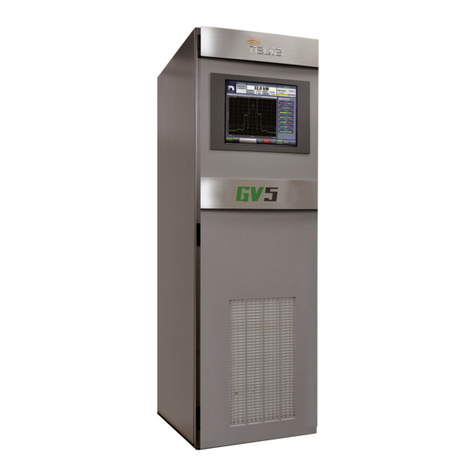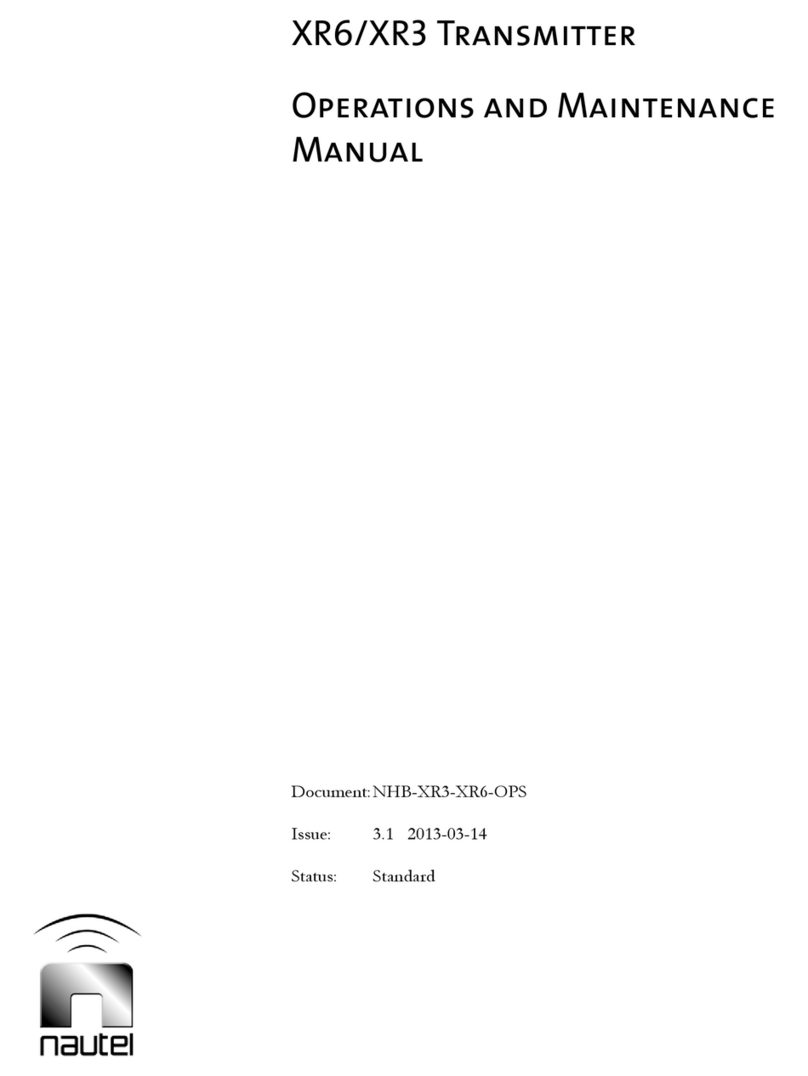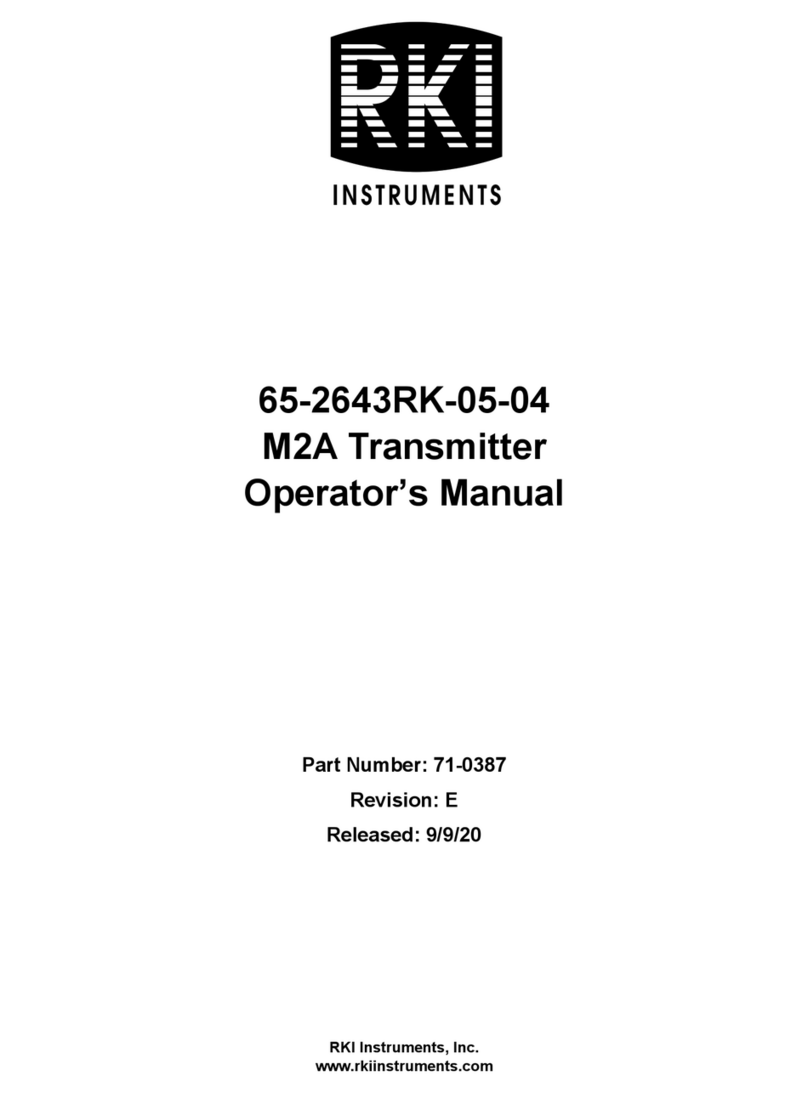
NV30/NV40 Operations and Maintenance Manual Description
Page 1-2 Issue 3.3 2014-12-10
Ac-dc power stage
See electrical schematics SD-1 (A, Bor C), SD-2 and SD-3.
The ac-dc power stage converts the ac power source to a positive dc voltage (PA volts) for the
transmitter's intermediate (IPA) and RF power amplifiers. The transmitter accepts a wide range of ac
input voltage options:
– 3-phase, 180 - 264 V ac (208 V ac nominal)
– 3-phase, 312 - 457 V ac (380 V ac nominal)
– 1-phase, 180 - 264 V ac (240 V ac nominal)
The ac-dc power stage provides power to operate cooling fans in the power supply modules, RF
power modules and reject load modules. It also provides power to the low voltage power supplies,
which generate the low level dc voltages (±15 V and +5 V) used throughout the transmitter, and to
the +12 V dc power supplies for the SBC (single-board computer) and AUI (advanced user interface).
The ac-dc power stage comprises ac input terminal blocks TB1, TB2 and TB3, an ac distribution
assembly (A6), a power supply distribution PWB (A7), SBC/AUI power supplies A (U1) and B (U2),
LVPS modules A (U3) and B (U4), fan power supply modules A (U7) and B (U8), IPA power supply
modules A (U9), B (U10) and C (U11), and dual PA power supply modules (U12 through U43) for
each of the 16 RF power modules. There is also a PS interface PWB associated with each power
supply module (fan, IPA and PA).
Power supply modules
See Figure SD-2. Power supply modules U9 through U43 convert the ac input voltage to a regulated
dc supply (IPA volts and PA volts) for 16 RF power modules (module contains both IPA and PA).
Each switching power supply module provides 2000 W output, at typical levels of 50 V and 40 A. The
modules regulate the output voltage based on a PA (or IPA) Volts Control input from the control/
monitor stage. Test points on the associated PS interface PWB allow monitoring of module presence
and ac input status. Each module has a built-in cooling fan and each senses out-of-regulation and
excessive temperature conditions and applies PS Fail and PS Temp alarm signals to the associated RF
power module. Both conditions cause the power supply to shut itself down, thus reducing the
transmitter's RF output.
The same modules are used for fan power supply modules U7 and U8. Their PS Fail and PS Temp
alarm signals, as well as the PS Module Present status signal, are applied to the control/monitor stage.
